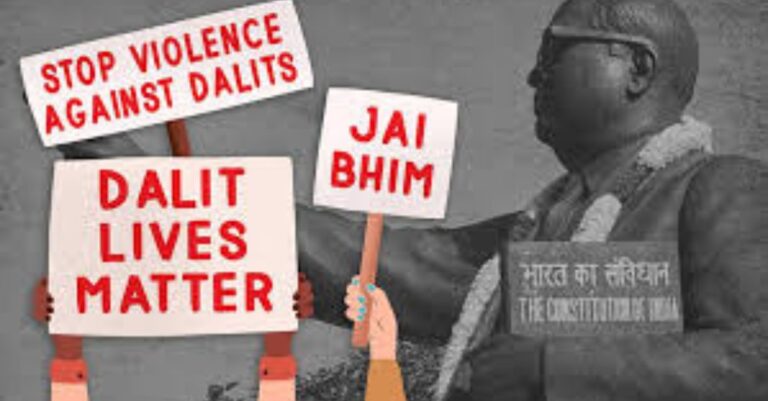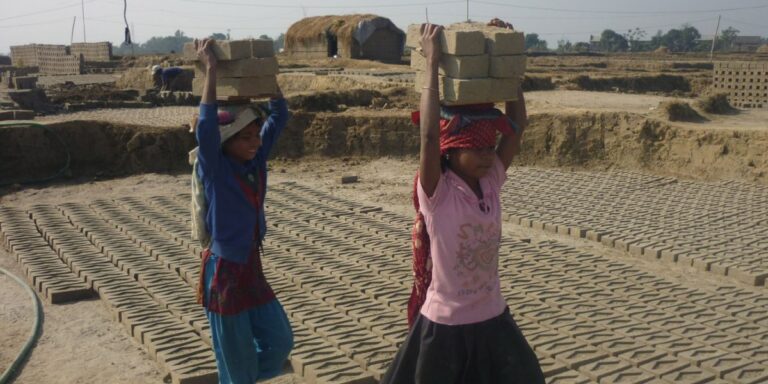Govind Bhattacharjee, in his article “Temples and Mosques” (The Sataesman, 18 Feb. 2024), suggested, “Indeed, if the Muslim side had agreed to voluntarily cede Ayodhya to the Hindus in the first place, the history and politics of the nation would have been different today. As the new emerging evidence now seems to suggest, the Muslim community was apparently not against such an amicable settlement, but it was sabotaged and hijacked by left-liberal and Muslim intellectuals.”
He began by saying that religion is a private matter. He quoted Eric Hobsbawm and suggested that “religion is a dangerous addiction.” He agreed that the past is being “weaponised to serve religious and political interests, especially with an approaching, all-important election.
After the worship of Shringar Gauri resumed in Gyanvapi Mosque under orders of a Varanasi district judge for the first time in 30 years, the treasurer of Shri Ram Janmabhoomi Tirtha Kshetra, Govind Dev Giri Maharaj, said Hindus will forget all other things if their sacred temples, Gyanvapi and Krishna Janmabhoomi are “freed peacefully”, assuring that once these temples are “freed”, Hindus would not demand any more because “we have to live in the future and not in the past”.
He then quoted the retired Regional Director of the Archaeological Survey of India (ASI), KK Mohammad’s autobiography, “Njan Enna Bharatiyan” (I an Indian) that revealed several pillars with inscriptions resembling Hindu temples under the Babri Masjid structure, including a 12thcentury Vishnuharishila inscription in which there was clear mention about Mahavishnu who had killed Bali and also killed the man with ten heads, establishing its link with lord Ram.
Bhattacharjee then quoted KK Mohammad’s argument, “The Babri issue would have been settled long ago if the Muslim intelligentsia had not fallen prey to the brainwashing by the Leftist historians. A set of historians including Romila Thapar, Bipin Chandra and S Gopal argued that there was no mention of the dismantling of the temple before the 19th century and Ayodhya was (a) Buddhist-Jain centre. They were supported by historians Irfan Habib, R S Sharma, D N Jha, Suraj Ben and Akthar Ali,” he said, further alleging that they also “connived with the extremist Muslim groups to derail all attempts to find an amicable solution to the Masjid issue.”
Then he described how the invaders across the continents demolished places of worship of the invaded, and converted them to the places of worship of the invaders. And finally, he came to his point, “Mathura’s Keshavnath temple built upon the birthplace of Sri Krishna was destroyed and replaced by Shahi Eidgah mosque by Aurangzeb in 1670.
The left liberal historians are demanding scientific evidence of the claims relating to these temples or sites.It is a perfect no-brainer. Religion being primarily a matter of faith, beliefs about Mathura being the birthplace of Sri Krishna or Ayodhya being the birthplace of Sriram have a force in the psyche of believers which is much more potent than any evidence can ever prove or disprove.”
He opined that it is like demanding evidence of Jesus being born in Bethlehem or Prophet Muhammed ascending into Heaven from the site of the Al Aqsa Mosque in Jerusalem, as if people will believe such evidence contrary to their belief should a historian present such evidence. “You do not change people’s minds by defeating them with logic”, Nobel laureate economist Herbet Simon had said. If millions of Hindus earnestly believe that Sri Krishna was born in Mathura, their faith cannot be shaken by some piece of evidence presented by a fallible individual(s).
He then resorted to Ashwin Sanghi, who said that every historical wrong cannot be righted, but one mustn’t expect “a wounded civilisation to ignore all its open wounds.” The solution, like truth, lies somewhere “in-between”, which is the place for negotiation and accommodation. It is undisputable that like Ayodhya, Kashi and Mathura strike deep chords in the minds of millions of devout Hindus.
Anticipating similar disputes regarding other such mosques, Parliament then passed the Places of Worship (Special Provisions) Act of 1991 to freeze the religious character of places of worship using 1947 as the cutoff. That has not prevented umpteen numbers of lawsuits by Hindus on Mathura and Kashi from being filed in various courts.
More opposition by Muslims will lead to more Hindu consolidation and even more polarisation of society, and Muslims can never expect to win their case. Stubbornness on either side would harm development. Ayodhya has not been the last in the tale, but Kashi and Mathura might well be.
If we analyse Bhattacharjee’s piece, the following lines can be drawn:
1.
Muslim rulers once looted and demolished many temples (36000, according to a former Karnataka minister KS Eshwarappa). This number may increase with the passage of each day. Bhattacharjee must know where he is, as he is a man of learning. I request him to write more on this line in the coming days (and I am sure he will do) so that a wounded civilization would not have a single wound. Let all mosques in India be converted into temples. So he can have no burning issue to write on.
2.
Faith is supreme. Look at his way of arguing. He began by saying that religion is a private matter. Only he makes it a public issue, and for whom? For the Hindu sentiment (he does not say so). This type of cleverness can no longer betray Indian Muslims. The Muslims have deeply understood intellectuals and academics of his likes. He is writing for what and for which reactionary force? It is also understood. He can no longer mislead the Muslims.
3.
His piece harms the scientific community and the scientific temperament of the land. But to speak of scientific temperament in New India is a mockery. Funds are given for projects to find traces of gold in cow dung. Scientists are openly making the most unscientific comments. This has led us, as warned by noble laureate Tagore decades ago, to a land of religious sentiment where not only the clear stream of reason has lost its way/ Into the dreary desert sand of dead habit but also championed the destruction of rationality.
4.
He basically suggests ceding the claim not to Varanasi and Mathura but to all that is part of the Muslim way of life, their culture and credentials. It may seem to some an exaggeration. But it is true. And that, to what Bhattacharjee is alluding, has been penned by me long before the publication of his piece. Let’s read it to grasp the essence of Bhattacharjee’s misleading piece which purposefully hides many truths–lynching Muslims, bulldozing their homes and mosques, making them invisible in socio-economic-political space, and so on.
Lynch the ways of the ‘other’
Madrasas are waiting for coming flames,
For they are terrorist hubs
Medical schools are not required,
For they presage our age-old ways of healing
Astrology courses are vital,
For they produce the best bhakts
Vidyamandir is crucial,
For they make faithful nationalists
Who can instil fear into ‘others’
By crying ‘Bharat Mata Ki Jai’, ‘Jai Shree Ram’
The Quran is not critical,
Leave it or go to Pakistan
Gita is imperative for school
For it makes kids sacred as Gangajal
Mike at Masjid is to be barred,
Beating drums at Mandir calms the evening air.
Pray at home on Eid,
For we’ll turn prayer-field into a cowshed.
No burial ground?
Don’t worry,
We’ll kill and bury you into
City’s garbage-heaps
Cattle traders are visual pollutants,
Let’s lynch them and clean our blood,
Lungi-clad labourers bar our vision,
Let’s cut the genitals of the aliens.
Don’t wear a skull cap,
We’ll lynch you if you dare to wear it.
What we learnt from Chatterjee’s piece is the reiteration of Hindutva claims. If lynched or killed in riots and pogroms or genocidal attacks, Indian Muslims will have the shortest route to heaven. In one way, it is good. It will bury the age-old hatchet.
If they somehow escape from the said trajectories, they will have to live at the mercy of the majority of Hindus. Their loyalty to their land of birth will be questioned; their ways of life will be erased. They will be lynched, their women will be raped, their mosques will be razed to the ground, their means of livelihood will be taken away, their books be burnt.
Either they will have to be absorbed in the Hindu mass, or they will have to survive with endless stories of humiliation, suffering, and trajectories of marginalisation.
Their lives, in the words of Laurent Gayer and Christophe Jaffrelot, will be invariably decided by “economic deprivation, by their sense of physical insecurity [lynching] and by their increasing socio-spatial segregation.” Indian Muslims largely “evade the general rise in the standards of living witnessed by other Indian minorities such as the Sikhs, the Christians or the Buddhists.” They are never at ease with their “territorial bastion.”[i]
Muslims are sacrificial goats in the hands of the Hindus. They must surrender to Hindu demands, may it be handing over mosques and plots, may it be assimilating to the Hindu fold, if they want to survive in India. Despite his learned manoeuvres, Govind Bhattacharjee has been unable to hide his hideous thoughts.
[i] Gayer, Laurent and Christophe Jaffrelot, (Eds.). Muslims in Indian Cities: Trajectories of Marginalisation. HarperCollins, 2012. p. 2.




